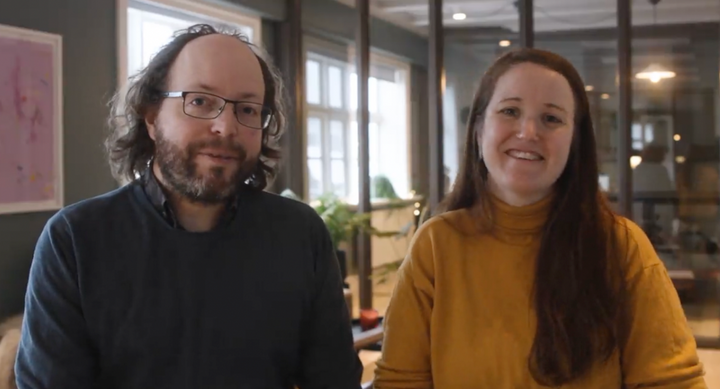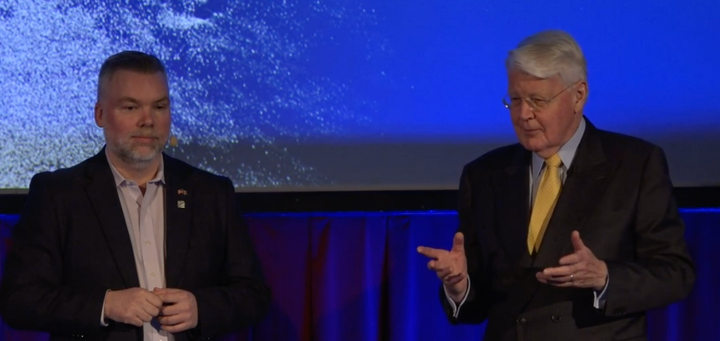NSA Ventures' future, structure, and role in the ecosystem
This post is from the Northstack Memo, our newsletter and commentary on recent happenings in the Icelandic startup ecosystem, written by @kiddiarni.
NSA Ventures is standing on crossroads right now. Two investment managers and the CEO left in December to start their own fund. (They’re titled “Venture advisors” on the fund’s website). A braindrain like this calls into question the fund’s long term strategy and plans. These employees have more info on where the fund is headed and chose to venture out on their own.
Late March, the board of NSA Ventures announced Huld Magnúsdóttir as the new CEO:
Huld is an experienced manager with a diverse background from both the private and the public sector. From 2009 she was the Director General of the National Institute for the Blind, Visually Impaired and Deafblind and was the acting director of the Social Insurance Administration between 2015 and 2016. Between 1993-2008 she worked at Össur in Iceland and abroad in various management positions, …
According to Almar Guðmundsson, chairman of the board of NSA Ventures, Huld is a great catch for the fund. “Huld has extensive business knowledge and experience in innovation, strategy and international operations after working world wide. She has the experience we’re looking for now that the next steps of the fund will be formulated.
The last two lines are in my opinion the most interesting ones. Almar didn’t comment any further on what exactly that means, but I’ll dump my ideas here.
- The comments signal something that has been on the horizon for some time. From our notes from last year’s annual meeting:
There will be a full re-evaluation of the funds’ legal structure this year. This is not new, and is mentioned in the Ministry for Industry and Innovation’s plan for entrepreneurship. According to the plan, NSA will focus on investing in funds, rather than individual investments.
- These statements fit well with Huld’s CV, which doesn’t look like a classic VC hire. Her experience doesn’t come from founding or operating a startup or the finance industry. Rather, her last jobs have been administrative and management roles in institutions, which would be useful if the fund is aiming towards major changes in its strategy and operations.
These two things suggest to me, that the plan is to continue on the road to a fund of funds. This would focus the fund’s capital into investment funds, instead of NSA Ventures funding individual companies.
NSA’s structure (and legacy?)
NSA is an official institution, but not a governmental agency. It’s not part of the governmental budget but its existence is defined in law (nr 61 / 1997). This means that operational details like how directors are appointed to the board is law.
The initial capital used to start the fund is from several funds of the time (including the Fisheries Fund and Industry Development fund). That, in part at least, has led to some interesting rules (when we look at it now) in regards to who sits on the board. It’s a five person board, nominated by the Minister for Industry and Innovation as follows:
- one without nomination (at the minister’s discretion)
- one based on suggestions from a coalition of industry (I’m guessing that’s the Federation of Icelandic Industries, SI)
- one based on nomination from the minister in charge of innovation and development in fishing (The Minister for Fisheries and Agriculture)
- one based on suggestions from the coalition of companies in the fishing industry (I’m guessing SFS)
- one based on a nomination from ASÍ (Icelandic Confederation of Labour)
Let’s break this down a bit. Two of five are discretionary picks from two ministers – innovation and fishing. Two are suggestions from the business community – general industry and fishing. One is from the labor organisations.
The discretionary picks make sense to me. While NSA Ventures is an independent institution, it’s built on official money. It’s understandable that the government wants influence in that case. Whether it should be on or two discretionary picks is up for debate.
The suggestions from the business community also make sense when you look at the history of the fund. Some of the initial capital came from industry specific investment- and loan funds. The financing for those came at least in part from the industries, and the law discusses this. The appendix to the law from 1997 discusses the reasoning for this.
The fifth board member comes out of the blue from the labor organisations. Reasoning for why the labor organisations should have a representative are completely absent in documents accompanying the initial bill.
It’s notable that one of the committee members reviewing the initial bill objected to this arrangement. “Nominations to the board show that the authors of the bill are still stuck in the old division by industry. Fisheries and industry have a nominee each, but the service industry has none.” The review further comments that there were suggestions of different arrangements, including nominations from the universities and engineering societies.
Any review of the laws about NSA should definitely look into how board nominations work. In today’s world, it’s worrying that technology industries are not explicitly represented, but the labor organisation is.
This arrangement was debated in 1997, and should absolutely be scrutinized now, twenty years later, in 2017. This is especially worrying now, that the funds most interesting investments are in software and health- or bio technologies. Also, just clearing up why ASÍ should be there would be nice (if you can make sense of it, please let me know).
NSA’s role in the ecosystem
An interesting part of the initial laws that founded NSA Ventures is the discussion about where in the funding stage the fund should operate. The memo that accompanies the law identifies three stages of startup funding: seed, start-up and expansion, and then states:
“The main role NSA will take in investment projects will be … funding expansion.”
It’s likely that this has been changed since the fund’s inception, especially because most of the fund’s fresh investments are in the earlier stages.
But it opens up the discussion about what the role of the fund is, and what it should be. Which leads to the bigger discussion of how the government should support investment in startups and innovation, which initiatives suit best for each challenge, and so forth.
With the new hire, a new minister, and obvious changes in operations at NSA Ventures, a holistic review is in order. Stakeholders – including officials and representatives of the ecosystem – should look at the fund’s role in the bigger picture, diagnose where the challenges are, and apply tried and tested initiatives to address those challenges.
What are your thoughts on this issue? Send me a message with your thoughts.
Sign up to receive the Northstack Memo straight into your inbox.
[mc4wp_form]




